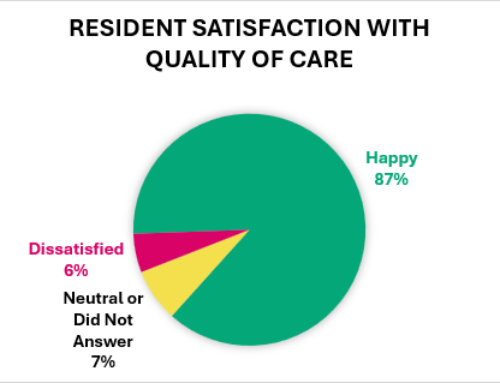Senior living is much more complex, varied, and creative than ever, and residents and their families expect diverse and numerous amenities. Innovation and flexibility are keys to thriving in this evolving market, and both come into play with the successful integration of independent living into assisted living, the topic of a recent TALAHour webinar hosted by Misty Powell, Chief Program Officer/Co-Founder of Civitas Senior Living, and Greg Hunteman, President of Pi Architects. The two hosts, both TALA members and frequent collaborators on several projects, talked about the different models of integration, the advantages and challenges of each, and how to make them successful for the needs of residents, community operations, and cost-effectiveness.
There are two big factors at play in today’s senior living market: One is the growing popularity of active adult communities, where residents are individually mobile, engaged, often working, or volunteering, and seeking a fun, adventurous, and intergenerational lifestyle with a focus on wellness and purpose; The other is the growing acuity of assisted living residents, who increasingly have one or more chronic condition and some degree of cognitive impairment. Serving these two populations, perhaps in the same building, can be challenging, but it also presents some opportunities.
Internal and External Considerations
Powell stressed the importance of weighing external and internal considerations. The external ones include market demand, cost considerations, and local regulations. The internal considerations involve design and layout, staffing, amenities, and programming.
“If you are thinking about integrating IL into AL, there are some things to consider before breaking ground. It is important to know what sets you apart and who your competitors are. You also need to know the demographics and demand in your area,” said Powell. She added, “Have a plan regarding what kind of IL you want to create; make a pro forma and determine what is practical.”
The internal considerations, particularly design, can be fun, Powell said, but noted, “Make sure you’re customizing it for you.” Staffing is a huge component that can be an expense, so that needs to be considered, as well as what amenities and programming you want to offer and what spaces will be required for them. These all play into your pro forma, she said.
Food service and dining are huge considerations. How will food services be addressed? Hunteman observed. “Consider the options, needs and demands of your residents,” he offers. Some communities are unbundling dining options, for instance, giving residents a system where they get points each month or gift cards they can use for dining or bar services. “Some communities want to plan for less and that is ok, however giving them the option to do more later if they want to,” he said.
Of course, it is essential to look at construction costs; and the models Hunteman and Powell discussed each offer some opportunities to manage or even cut costs while attracting residents and maintaining a quality brand.
Connected Buildings
One option is connecting AL and IL buildings. Hunteman talked about one such project his company worked on. “We created a community center to appeal to IL and AL, with an inviting porch, a bright and beautiful lobby, and a ‘wow’ view of the pool area and outside spaces,” he said. Other amenities include pickle ball courts, a pavilion with convenient rest rooms, a dog park, pet washing stations, and dog yards on ground-level units. There also is a fitness center that caters to both AL and IL residents and individual exercise/workouts, as well as opportunities for intergenerational programming.
Hunteman said, “We’ve been designing a number of communities that have multipurpose rooms near the entrance that show the life of the community.” Both AL and IL residents can take advantage of these and enjoy joint spaces such as a bigger salon and theater that can be used for entertainment as well as classes and education.
The pros of connected buildings, Powell said, are that they save on construction costs, create a sense of ‘we are all together,’ and save on staffing such as kitchen/dining help, evening receptionist, and maintenance staff.
The challenges include regulations that exist for AL, which can impact IL. “Even if a person just wants to enter or walk through an AL, they must abide by the regulations. Having shared spaces makes it a bit of challenge for residents to share and feel comfortable,” she noted.
At the same time, some IL residents may not welcome the opportunities to interact with those in AL. One option, she suggested is designating specific times that residents from each side can use certain spaces. It also may be possible to have certain spaces that are connected, such as activities rooms, libraries, and/or pools. “You have to think about all these things if you decide to have connected buildings,” she said.
It is possible to integrate an AL and IL community. An example of this, said Hunteman, is The Villages at Tuscan Lakes, which achieves both IL and AL with a high-end vibe. AL and IL have one entry and share dining area. Residents experience grand living throughout, but IL units are larger and have cooktops in the kitchen and laundry facilities with a washer and dryer. This model can be appealing to those residents who may need some level of help or support but aren’t quite ready for AL. When that time comes, the transition will be easier.
Separate Buildings
Separate buildings can be side by side or a few blocks apart. The goal, said Hunteman, is to have separate IL/AL buildings with amenities and programming customized for each population.
There are benefits and disadvantages of separate buildings, Powell observes. Among the pros: they appeal to IL residents who want to feel independent and identify as active, healthy older adults, as well as those who only want to interact with other such individuals. They also eliminate concerns about the restrictions that you may have when you integrate AL and IL amenities. However, there are challenges, such as the fact that having separate kitchens and dining facilities can increase costs for staffing and other elements.
One option that is growing in popularity is the use of unused or excess outdoor spaces to create satellite buildings or cottages. This is one way to add up to 100 unbundled IL units and maximize occupancy. “Cottages are amazing,” said Powell, adding, “However, they are costly to build and take square footage. But they are popular and don’t require a lot of staffing. Most of our campuses have clubhouses just for cottages. Those that don’t have these provide food delivery directly to the cottages.”
Another option is duplexes with a shared porch, suggested Hunteman. This gives residents privacy and independence while enhancing socialization and a sense of community.
Separate IL buildings should be prepared to appeal to active adults and their growing demand for things like gourmet kitchens, access to cutting-edge technology and the amenities they need to conduct business and creative pursuits, personal trainers, education and intergenerational activities, and a broad choice of dining options (from bars and bistros to cafes, grab-and-goes, and food trucks).
Conclusion
“There are many ways to build IL into AL, but these are the ones we have utilized; and we’ve found that they work well,” said Powell. Hunteman added, “There is much we can do to lean into different directions and create a community that is aligned with all the factors that are important to your residents and your organization.”
You can watch the full TALAHour recording here.




